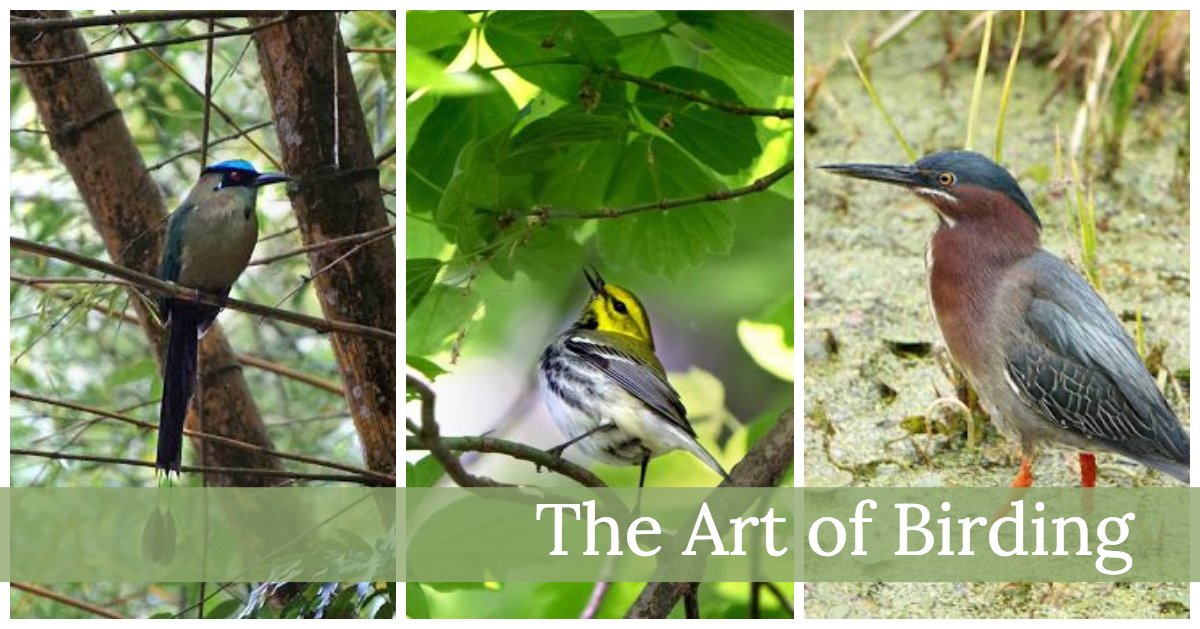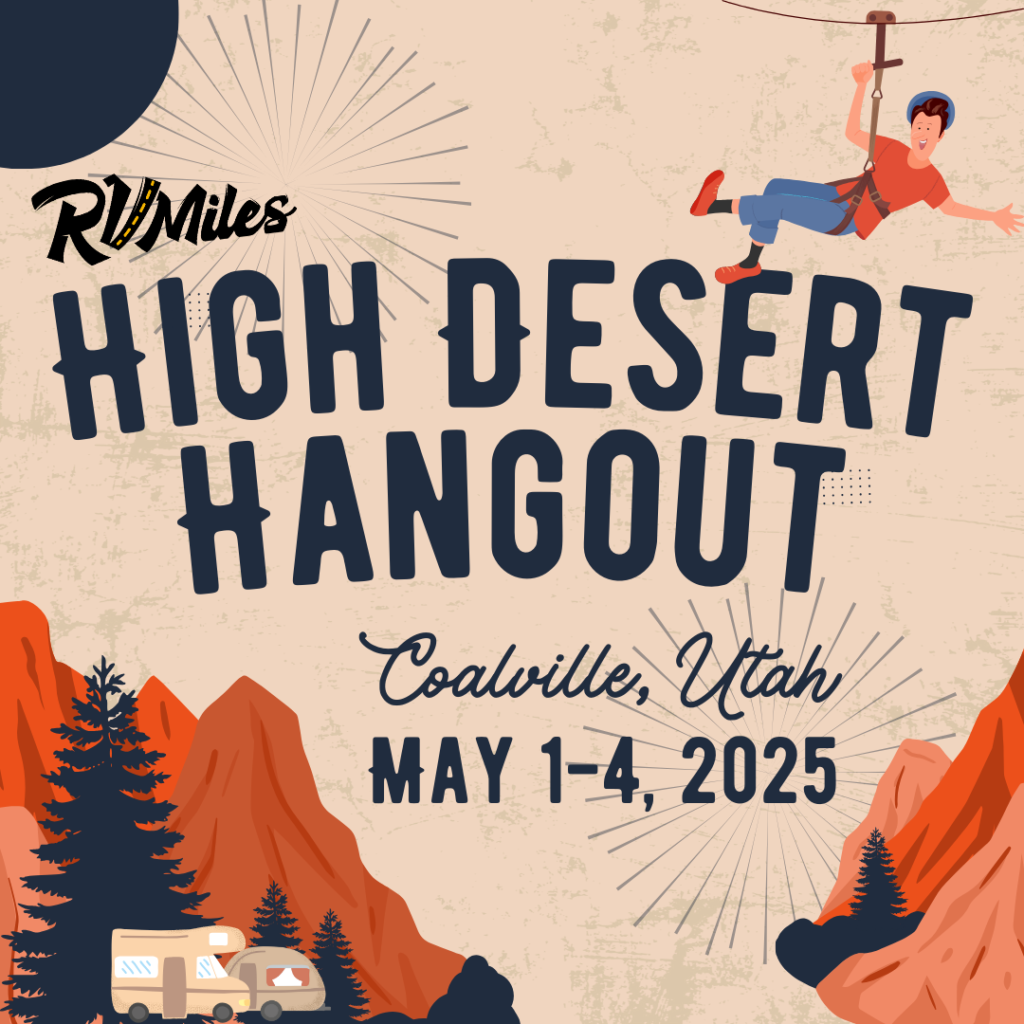Our new “Road Warriors” series features articles from RV travelers about their adventures, hobbies, or expertiese. If you’re interested in contributing, let us know.
By Michele Reyes
Want to meet more people on your travels? Don’t buy a dog, just buy some binoculars! They are sure to attract birders or just curious people.
One of the best parts of traveling fulltime is the opportunity to try new things. About a year into our travels my husband and I had secured a
She took me birding.
Now before arriving at the refuge, I had never heard of birding. While growing up in Ohio, I had noticed birds, like the beautiful blue jays and bright red cardinals, but the rest of the birds seemed to all be the same kind; little, brown sparrows, right?
That first October morning on the refuge, Nicole showed me one bird after the other, pointing out their distinguishing features. At first, I saw nothing particularly special, but when I looked at them thru my borrowed binoculars, it was as if the scales fell from my eyes. I saw colors, stripes

The Green Heron can be found along water throughout most of the United States | Michele Reyes
I have always loved hiking and being outdoors, but with the addition of birding came a whole new level of excitement. The anticipation of seeing a new bird, of witnessing some special interaction, or simply running into a fellow birder kept me on the trails daily. This night owl began waking before dawn so I could be on the trail when the birds began singing at first light. Turns out I love sunrises. I began rerouting our travel to hit birding hotspots. I became happier. I became healthier. I actually lost so much weight, I thought something must be wrong with me. I also became more knowledgeable. Around 800 species of birds can be found in the United States. Just three years after that first bird walk, I can now identify the majority of them by sight and I can even identify maybe 40 by ear! I’ve found wonderful, talented birding friends who live all over the world.
If you want to try birding on your own or decide to get really into it, the following information will be helpful.
What do I need?
- Binoculars. I use these because they are highly rated for lower cost birding binoculars. If you’re not ready to spend money on birding yet, you can often find used binoculars for a low price. Check Facebook Marketplace, Craigslist,
Ebay , etc. 8×42 is ideal for general birding. - Field Guide. There are many options. I love my Stokes guide because I prefer photographs however some of the others with drawings do a better job at pointing out the particular distinguishing features to look for. If you prefer a free app for your phone, I suggest Audubon or Merlin Bird ID.
- Smart Phone. Really? Well, no, but it sure makes life easier. You can go old-school as many do and just use a pen and notebook, but I prefer my phone.
That’s all you NEED, but if you get serious, you’ll want more and I’ll explain those in a bit.
Where do I look for birds?
- Start in your own backyard, but then search out a neighborhood park, pond, or look up your nearest wildlife refuge. Keep in mind that birds migrate every spring and fall, so watch for a larger variety of birds during these times.
- Soon you’ll want to know where to find new birds and that’s when apps like eBird and BirdsEye will come in handy. More on that later.
How do I identify the bird I’m looking at?
- Pay attention to the bird’s size, color, and shape. Use benchmarks—Is it sparrow size? Larger than a robin?
- Habitat and behavior can help narrow it down as well. Does it bob its tail? It is high in a tree or on the ground. Take time to really watch the bird, especially if it’s calling. That’s a great time for your brain to associate a bird with its call.
Because I am always traveling to new areas, I’ve learned to use eBird.org to see what birds I can expect to see. First I explore by city to find hotspots in the area. I then make a list of the birds which have been seen in the last month or two that I’m unfamiliar with. I will look up those birds in my field guide and make notes so that I’ll know the bird when I see it. I take this note birding with me. This is much easier than going thru the entire book trying to find what you saw and helps reduce misidentification. It’s not going to help you if you see a bird that someone else hasn’t reported though, so keep that in mind.
There are a couple free apps which will help you identify a bird based on a few quick questions. Try out the Audubon app or Merlin Bird ID. Once you input your location (by GPS), size, colors and what the bird was doing, it will return a list with photos of birds it may be.
Another great app for identification, is iBird Pro. This one you must pay for, but for me it was worth $20 to have an entire field guide with songs and calls in the palm of my hand especially when I have no access to internet. Sometimes two species are so similar that hearing their song is the most reliable way to differentiate.
If you’re still stumped, post a photo of the bird on the Facebook group called “What’s this bird?” and you’re sure to get a quick answer.
How do I keep track of the birds I see?
- Create a free account on www.eBird.com.
- Download the eBird app to easily keep track of the birds you see and at the same time become a Citizen Scientist supplying valuable information to biologists and ornithologists who will use the data you submit.
When you begin birding a location, open the eBird app and enable GPS to select the nearest hotspot or your actual location if you aren’t in a hotspot. Type in the birds you see by using the 4 digit code. Don’t panic, this is pretty simple. If the species has a one-word name (Mallard), type the first 4 letters (MALL). If it has a 2 word name (Canada Goose), type the first 2 letters of each word (CAGO). If 3 words (Red-Winged Blackbird), type the first letter of each word (RWB). Soon you’ll be talking in code. Don’t let the codes overwhelm you. If you prefer, you can type the full name or even the first couple letters and a list will pop up for you to select your bird. You can type in the number of birds you see, or simply tap the number and it will increase one for every tap. After you’ve submitted your sightings, you’ll be able to use eBird’s website or app to easily see how many species you’ve seen in each county, state, or country, this year and in your life. It’s quite fabulous!
How do I find birds I’ve never seen before?
I love using the BirdsEye app for this. It syncs with my eBird account and will tell me if there are any birds nearby that I haven’t seen before. How fantastic is that?! The app is free however many of the species are hidden. I pay $3/mo to reveal all species. Tap on the bar chart to see on a map where the bird has been seen. Adjust the filter if you want to see the most recent and closest sightings. If you tap on the photo of the bird, it will give you more photos and assist with identification.
Black-throated Green Warbler singing at The Biggest Week festival in Ohio | Michele Reyes
Ready for the next challenge of birding?
Try learning the calls of three common birds in your area. Soon you will be able to identify the birds in your yard without even looking! Once you have those down, try three more. It’s a fun challenge!
Soon you’ll be reading books about birds and going to birding festivals! There are tons to choose from, but here are my favorites:
- Kingbird Highway
- The Big Year (This is derived from a true story and was turned into a movie featuring Jack Black, Steve Martin
and Owen Wilson) - Birding on Borrowed Time
The Biggest Week in American Birding is a festival held in northwest Ohio during the peak of spring migration in May. Warblers come thru in huge numbers and are easily seen on the short trees along the boardwalk as well as many parks in the area. Highly recommend!
Colombia’s BirdFair in Cali, Colombia is held in February. Colombia has more birds than ANY other country, and they are gorgeous! If you want to be completely overwhelmed by feathered jewels, this is the place to go. The guides on the birding tours did well with knowing english names, but unfortunately all but one of the nightly presentations were in Spanish with no translations available. If you go to Colombia, contact Felipe at Valle De Colores tours. With his fine-tuned ear for hearing and identifying birds by sound and his detailed knowledge of the area, we saw nearly 300 species in 10 days!
Andean Motmot found in Pance, Colombia | Michele Reyes
Soon you’ll be amazed as a whole new world is revealed to you. It has been surrounding you all along but somehow you were oblivious to it. You’ll gain a whole new appreciation for nature and the One who made these intricately designed creatures. I’ve always loved hiking, but with my new heightened awareness, I find myself noticing all kinds of creatures that I would have previously missed. It has brought much joy to my life and I will forever be grateful to the woman who walked into my refuge one October day.
Happy Birding! Feel free to ask questions in the comments.
Listen to Michele discuss birding on the RV Miles Podcast:






